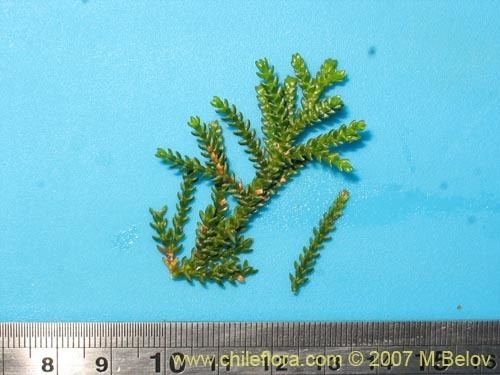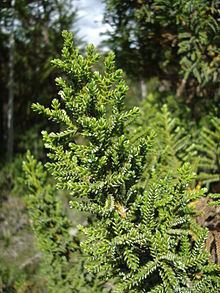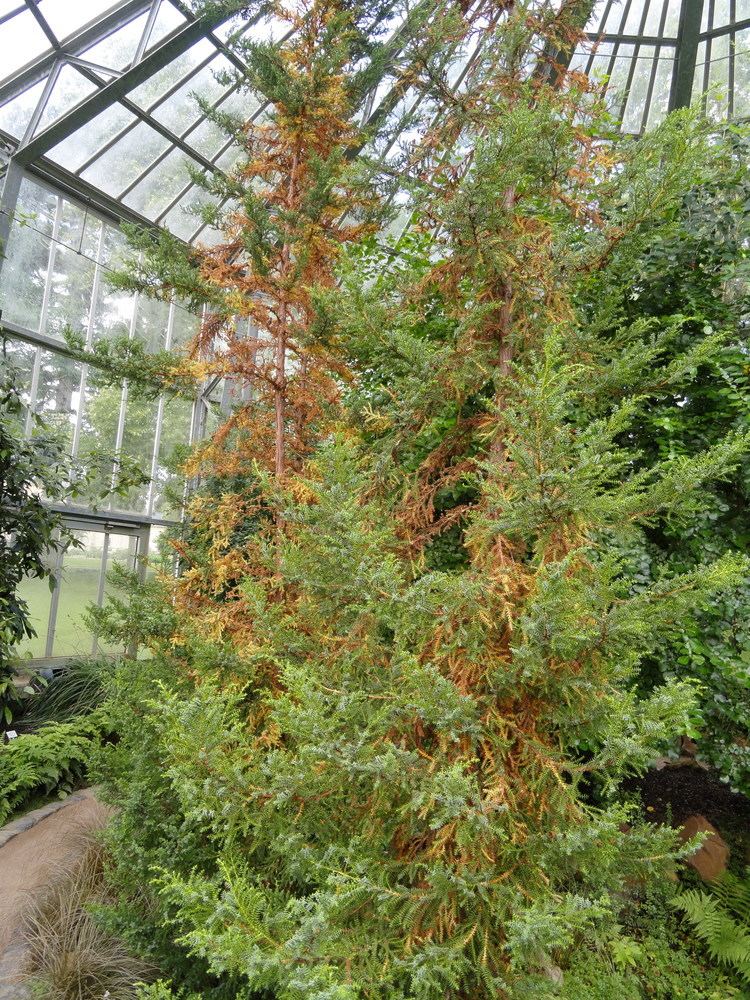Class Pinopsida Scientific name Pilgerodendron uviferum | Division Pinophyta Subfamily Callitroideae Rank Genus | |
 | ||
Similar Austrocedrus, Fitzroya, Papuacedrus, Nothofagus betuloides, Diselma | ||
Pilgerodendron is a genus of conifer belonging to the cypress family Cupressaceae. It has only one species, Pilgerodendron uviferum, and is endemic to the Valdivian temperate rain forests and Magellanic subpolar forests of southern Chile and southwestern Argentina. It grows from 40 to 55°S in Tierra del Fuego, where it is the southernmost conifer in the world. It is a member of subfamily Callitroideae, a group of distinct southern hemisphere genera associated with the Antarctic flora.

It is very closely related to the New Zealand and New Caledonian genus Libocedrus, and many botanists treat it within this genus, as Libocedrus uvifera (D.Don) Pilg. It is also a taxonomical synonym for Libocedrus tetragona (Hooker). It is known locally as Ciprés de las Guaitecas, (after the Guaitecas Archipelago) and elsewhere by its scientific name, as Pilgerodendron. The genus is named after Robert Knud Friedrich Pilger.

It is a slow-growing, narrowly conical evergreen tree which grows from 2–20 m in height (with taller trees existing formerly), with a trunk up to 1.5 m diameter (reported to 3 m diameter in the past). The leaves are scale-like, arranged in decussate pairs. The leaves are all equal in size, giving the shoots a square cross-section (unlike the Libocedrus species, where pairs of larger leaves alternate with pairs of smaller leaves, giving a somewhat flattened shoot). The seed cones are 5–12 mm long and 4–6 mm broad, with four scales, two sterile basal scales and two fertile scales; each scale has a slender spine-like bract, and each fertile scale has two winged seeds 3–4 mm long. The pollen cones are 5–10 mm long and 2 mm broad, with 12–20 scales.

It is found in the evergreen coastal lowland forests along the Pacific coast of the ecoregion, in association the broadleaf evergreens Nothofagus betuloides and Drimys winteri. It is also found in open stands in sheltered bogs further inland, where it is often locally dominant, and ranges as far as the eastern slopes of the Andes in southwestern Argentina. At the northern end of its range it is found in association with Fitzroya cupressoides. It has been planted in the north coast of the Pacific Coast of the United States.

The wood is yellow-reddish, very decay resistant, it has a distinct spicy-resinous smell; it is very valuable, used for building construction. Due to over-exploitation, the species is now much scarcer than formerly, and is listed under CITES Appendix I; export of the wood is prohibited under this listing. The species is considered threatened by the World Conservation Monitoring Centre. Much of its original lowland habitat has been cleared.


